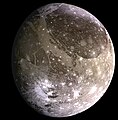Datei:The Galilean satellites (the four largest moons of Jupiter).tif

Gröössi vor JPG-Vorschou vor TIF-Datei: 800 × 262 Pixel. Wyteri Ufflösige: 320 × 105 Pixel | 640 × 210 Pixel.
Originaldatei (1.830 × 600 Pixel, Dateigrößi: 1,51 MB, MIME-Typ: image/tiff)
Dateiversione
Klick uf e Zytpunkt zu aazeige, wie s dert usgsäh het.
| Version vom | Vorschaubild | Mäß | Benutzer | Kommentar | |
|---|---|---|---|---|---|
| aktuell | 14:54, 29. Dez. 2011 | 1.830 × 600 (1,51 MB) | Prof. Professorson | {{Information |Description=This composite includes the four largest moons of en:Jupiter which are known as the Galilean satellites. The Galilean satellites were first seen by the Italian astronomer en:Galileo Galilei in |
Verwändig vu dr Datei
Di folgende Sytene händ en Link zu dem Bildli:
Wältwyti Dateinutzig
Die andere Wikis bruche die Datei:
- Gebruch uf af.wikipedia.org
- Gebruch uf ar.wikipedia.org
- Gebruch uf ast.wikipedia.org
- Gebruch uf az.wikipedia.org
- Gebruch uf ba.wikibooks.org
- Gebruch uf be-tarask.wikipedia.org
- Gebruch uf be.wikipedia.org
- Gebruch uf bg.wikipedia.org
- Gebruch uf bn.wikipedia.org
- Gebruch uf bn.wikibooks.org
- Gebruch uf bs.wikibooks.org
- Gebruch uf ca.wikipedia.org
- Gebruch uf cs.wikipedia.org
- Gebruch uf en.wikipedia.org
- Gebruch uf en.wikibooks.org
- Gebruch uf es.wikipedia.org
- Gebruch uf et.wikipedia.org
- Gebruch uf eu.wikipedia.org
- Gebruch uf fi.wikipedia.org
- Gebruch uf fr.wikipedia.org
- Gebruch uf gl.wikipedia.org
- Gebruch uf he.wikipedia.org
- Gebruch uf hi.wikipedia.org
- Gebruch uf hu.wikipedia.org
- Gebruch uf hy.wikipedia.org
- Gebruch uf id.wikipedia.org
- Gebruch uf it.wikipedia.org
- Gebruch uf ja.wikipedia.org
- Gebruch uf kk.wikipedia.org
- Gebruch uf ko.wikipedia.org
Wältwyti Verwändig vu däre Datei aaluege.





